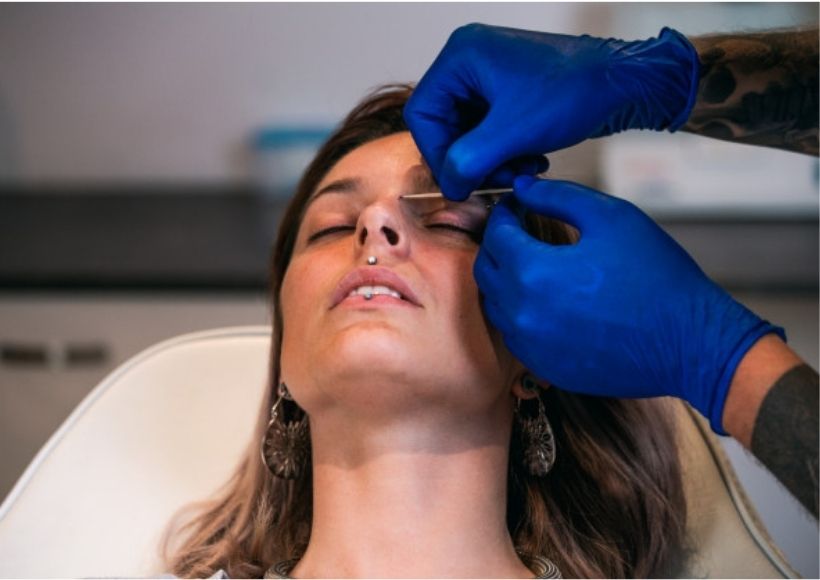Although the procedure to put a piercing is not complicated, it requires knowledge of hygiene, antisepsis, and technique that should not be underestimated
Piercings are becoming more and more fashionable, which is why in recent years the number of centers that carry out this procedure has increased without complying with all sanitary guarantees. A study published in the prestigious scientific journal American Journal of Dermatology revealed that, in approximately 20% of cases, some type of complication appears, the most frequent being infections and local bleeding.
Table of Contents
Risks Of Getting a Piercing
The problems that can be generated as a result of getting a piercing can be due to different causes: from the material used, the hygiene during the process, the instruments, the medical profile of the person, the aftercare, and, without a doubt, the area of the body where the piercing is placed.
First of all, we must be aware that the placement of a piercing implies a lack of integrity in the skin. Likewise, any type of piercing in any location implies a risk in terms of suffering complications. These are some of the possible complications that we may encounter when placing a piercing:
Allergic Reaction
We can suffer an allergic reaction to the material used, either to the piercing or to the antiseptic, even to the instruments. Many piercings have a nickel alloy; the nickel is in many objects of jewelry and is a relatively common cause of allergy in a part of the population.
Local or Systemic Infection
An infection may also occur in the perforated area, also called a systemic infection by the local spread. At the local level, we can find various symptoms such as redness, inflammation, increased temperature, pain when touching and fever may even appear due to systemic involvement.
Scarring And Disease Transmission
When we perform the placement of a piercing, we suffer the risk that the piercing does not heal as it should and that there is abnormal scarring of the area. For example, the formation of a keloid or local induration.
In turn, any type of intervention implies a risk at a biological level due to the use of contaminated material, which could lead to the transmission of diseases.
Risks According To The Area
However, depending on the anatomical place where we place the piercing, specific complications may appear. We will mention the most important:
Language
The placement of a piercing in the tongue can lead to the deterioration of the dental enamel of the nearby teeth due to microtrauma. This will involve dental hypersensitivity and even micro-fractures on the tooth surface. The ‘piercings’ in the mouth cause numerous oral and mucosal lesions such as inflammation (periodontitis, for example), infection, pain, alterations in phonetics and chewing, taste alteration, bleeding because the tongue is highly vascular, halitosis, changes in salivation, allergic reactions to the material …
Genitalia
Piercings in the genital area can cause a scar that obstructs the urinary tract, urinary infections, and local infections. Likewise, they can cause injuries during sexual intercourse that imply the possibility of transmitting biohazard diseases due to their bleeding.
As for nipple piercings, they can cause inflammation of the milk ducts causing galactorrhea or spontaneous lactic discharge. A residual scar may appear that could affect later breastfeeding.
Ear
Placement of the ear piercing can produce the dreaded cartilage necrosis, the evolution of which must be closely followed. Although in the ear there are areas that involve a lower risk of infection such as the lobe.
The Belly Button
At the level of the umbilical area, fungal infections must be controlled because it is an area prone to humidity, so subsequent care must be carried out with thoroughness. The healing of a navel piercing is usually slow due to the low blood supply to the abdomen.
Precautions To Avoid Complications
Considering the risks and once the decision to place the piercing and its location have been made, we must very carefully select both the professional and the center where we are going to be treated and controlled later in case of any complication that requires it.
In the same way, if on the day scheduled for its placement we present an acute infectious picture for some other reason (for example, the flu or tonsillitis) it is desirable to postpone the placement of the piercing because of the decrease in defenses caused by the acute infection can trigger the appearance of complications in the place of placement of the piercing.
On the other hand, if the person interested in the placement of the piercing has a medical history of interest such as a metabolic disease (for example, diabetes) or an autoimmune disease, it is recommended that they consult their family doctor in advance to assess the prescription of an antibiotic prophylactically. In labile people, the risk of infection is higher.
Finally, we will remember that the placement of a piercing requires meticulous hygiene in the area after its placement, as is the case with tattoos. We must verify the state of the piercing material and detect any deterioration for its immediate replacement. In the event that its definitive withdrawal is decided, although we can do it ourselves, it would not hurt to be supervised by the expert staff.
Also Read : All About ‘Toxic Free’ Natural Cosmetics

